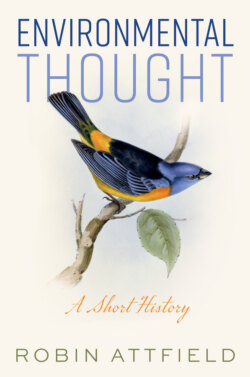Читать книгу Environmental Thought - Robin Attfield - Страница 24
St Francis of Assisi (1182–1226)
ОглавлениеFrancis of Assisi has been suggested by White as the patron saint of ecologists; White (1967) considered him an isolated exception to what he considered the Christian postures of anthropocentrism and mastery of nature. But this was a case of what Coates calls ‘making figures from the past over in our own image’, adding that ‘nineteenth-century Romanticism … launched the modern process of reinvention by casting Francis as a nature mystic’ like ‘a medieval Wordsworth’ (1998: 53).
The historical Francis, however, as Susan Bratton has concluded, fits into a long line of saints who respected and befriended animals as fellow-creatures: ‘St. Francis was not … an aberration, but the product of a thousand-year tradition beginning with Antony in the inner desert, and kept alive by the great monastic libraries of Europe’ (1988: 52). He is said to have talked and preached to bees, doves and even a wolf, chiding those that harmed human beings, reminding them of their indebtedness to their creator, and urging them to praise God (rather as the Psalms had done). Brother Thomas of Celano relates that he called all creatures by the name of ‘brother’, and Francis himself, during his final years, composed The Canticle of Brother Sun in which he addressed the sun and moon, fire and the wind as ‘brothers’ and water as ‘sister’. Stories of his preaching to swallows and at Gubbio to a ravenous wolf are recounted by Ugolino de Monte Santa Maria in The Little Flowers of St. Francis, composed a century after his death (Glacken 1967: 214–16), while the Franciscan order continued his teaching, albeit in diluted form.
Even if these stories display the embroidery developed during an oral tradition, their telling in the early fourteenth century is itself significant, belying Passmore’s claim that ‘In any case, Francis had little or no influence’ (1974: 112). Many of Francis’s ideas were in fact transmitted by his follower, the theologian Bonaventure (1221–74), who qualified Francis’s teaching by adding that the relation to God of different creatures differs according to their capacities (Santmire 1985: 98). Certainly, Francis’s attempts to humanize or make responsible citizens of wolves would not commend him to modern ecologists. In his beliefs, he was a man of this own time, with an unusually intense rapport with nonhuman creatures, alongside a related concern for economic and social justice among human beings. The main reason he appeared so exceptional to White was White’s controversial characterization of Christianity as uniformly committed to a despotic attitude to nature.
In 2015, Pope Francis paid tribute to St Francis of Assisi in his Encyclical Laudato Si’ for his joyful communion with fellow-creatures ranging from the stars to the animals and flowers. After quoting Romans 1:20, he also noted that Francis asked that part of the friary garden should be left untouched so that wild flowers could grow there, and so that those who saw them could raise their minds to the creator of such beauty (Pope Francis 2015: 10–12). While the assumptions of our day are not those of St Francis, retrieval of the awe and wonder that he showed towards the natural world could, as Pope Francis suggests, rescue us from attitudes of mastery and lifestyles of exploitation (see Attfield 2016: 99–100.)
